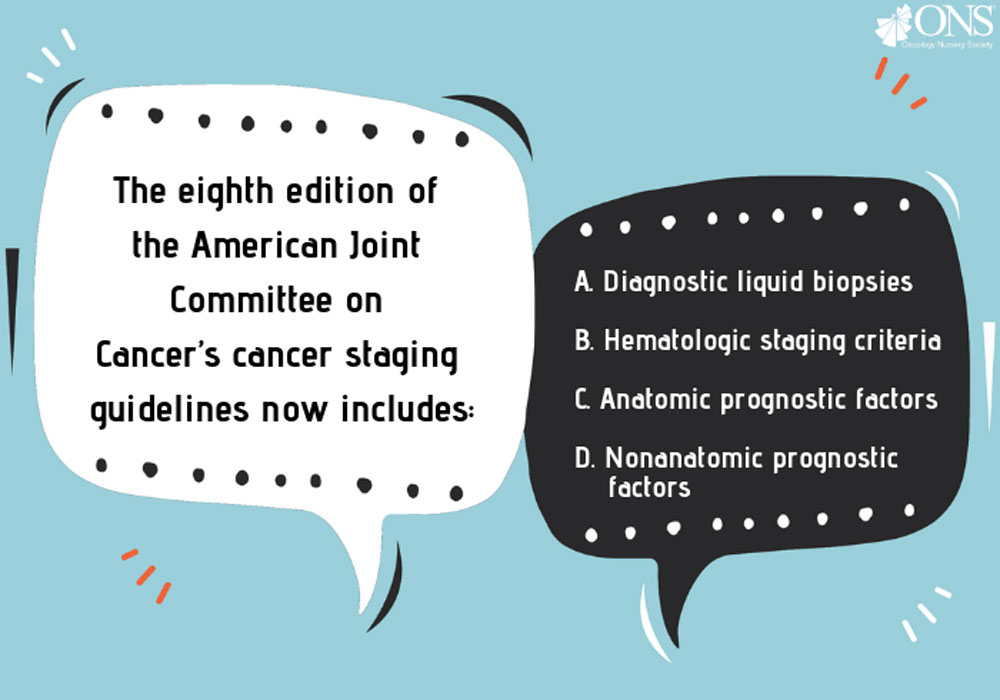The Answer
The answer is D. Nonanatomic prognostic factors
The eighth edition of the American Joint Committee on Cancer (AJCC) cancer staging guidelines have incorporated nonanatomic prognostic indicators for multiple cancers, and several prognostic factors are now required to complete staging.
Nonanatomic prognostic indicators (e.g., HER2, ER/PR, human papillomavirus [HPV]) in many cases more accurately predict outcomes and responses to treatment than anatomic factors alone. For example, HPV-positive oropharynx cancers are more radiosensitive, have fewer genetic alterations, occur in patients who are younger, and are associated with fewer comorbidities and better performance status than HPV-negative cancers. Thus, the staging, prognosis, and treatment approach should be different. However, those differences are not reflected in anatomic staging that does not include HPV information.
Although anatomic staging has been the foundation for cancer staging and has been included in all editions of the cancer staging guidelines, it is becoming one of the biggest challenges to the tumor, nodes, metastasis (TNM) staging system. Anatomic staging neglects to include biologic data about the cancer or the patient.
Diagnostic biopsies of the primary site, regional nodes, and distant metastatic sites are included in clinical classification. Liquid biopsies are not included in diagnostic staging at this time.






